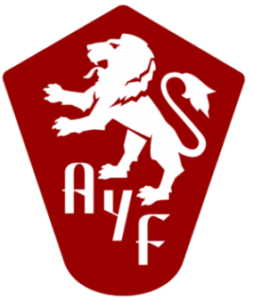Experiencing Javakhk Firsthand
Akhalkalakh, Javakhk, Georgia. 48 hours. 13 people traveling from Gyumri attempting to see an entire region of Armenian history in a short period of time. It was an exhausting, yet rewarding experience. Friday 6pm we got into the “aftobus” at Digin Lilig’s house in Gyumri to travel two hours to Javakhk. Once we got to the Armenian/Georgian border we were surprised that we actually had to walk the border… a twenty minute walk which on a normal day would have been fine, except it began to rain. Holding our luggage and sleeping bags we tried to walk at the fastest pace possible but it did not really work out. By the time we actually got to the Georgian border our clothes were soaked. We crossed the border, got into another “aftobus” and finally arrived at the Armenian Center (“Gendron”) in Akhalkalak.
As soon as we arrived there were already youth awaiting our arrival outside. They immediately took us upstairs and helped us situate our stuff. Nairi took charge and started the circle of introductions, which quickly went into stories about how he knew Hrag’s brother and how Vache’s sister was there last year. We listened to their stories about how the majority of deghatsis are being forced to leave Javakhk in order to find work, go to school or raise their families in other locations. We listened to how he had moved to Yerevan to receive his Bachelor’s but returned to his homeland (babenagan hogh) after graduation instead of taking the easy way out and leaving. Time flew by in Javakhk. I can sit here and write about the touristy locations that we visited, but what influenced me most was actually spending time with the locals and hearing their stories about why Javakhk is so important to them and us. On Saturday, Verginie, Vache and I gave an interview for a local radio station and when asked what was the one thing we would tell the local Javakhk-tsi’s our resounding answer was to never give up (mishd baykarik) and although it is very simple for us from America to say, “Don’t leave these circumstances, don’t not leave the only land in our badmagan hayasdan (Historical Armenia) which is still populated by a majority of Armenians”…In the most uncliche way possible we truly meant what we said. Javakhk, is an area which consists of a majority of Armenians, who until today grasp on to their identity, who still insist for Javakhk’s autonomy within the Georgia Federation. The youth that traveled with us showed us a few of the churches that used to be Armenian that have been transformed into Georgian churches… they’ve lost their kmpeds (steeples), their Armenian inscriptions have been unceremoniously plastered over or gouged out, however we can see an amazing struggle for survival. Even though they live in an area that is predominantly Armenians they face a greater chance of losing themselves and their history. For them it is not about assimilation but about losing their lands which have been in their families hands, and in our ancestors, for a period of time long before us.
Sirov,
Patil Aslanian



Leave a Reply
Want to join the discussion?Feel free to contribute!